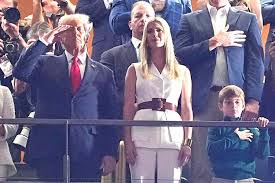Super Bowl fans are split after a fleeting camera shot caught Donald Trump during the national anthem.
Future Super Bowls and other major events will likely see even more sophisticated strategies for managing both the on-field action and the off-field narratives. Whether it is through innovative camera techniques, curated social media feeds, or proactive public messaging from high-profile figures, the goal will be to create an environment where every moment is celebrated and understood in its full complexity.
Moreover, the incident underscores the need for a broader dialogue about the nature of public expression in a hyperpolarized society. As viewers, we are called upon not only to interpret what we see on the screen but also to consider the myriad forces that shape those perceptions—be they political, regional, or cultural. In doing so, we may begin to appreciate that the true power of live events lies not in their perfection but in their capacity to spark discussion, reflection, and even transformation.
XI. Conclusion: A Moment That Redefined the Super Bowl Experience
Super Bowl LIX at Caesars Superdome in New Orleans will be remembered as a historic night—one that transcended the boundaries of sport to become a landmark moment in American cultural history. President Donald Trump’s attendance, the first by a sitting president, set the stage for an event that was as politically charged as it was athletically thrilling. The camera’s brief capture of Trump during Jon Batiste’s soulful rendition of the national anthem ignited a firestorm of debate, with fans and critics alike dissecting whether the reaction was one of unbridled patriotism or subtle disapproval.
